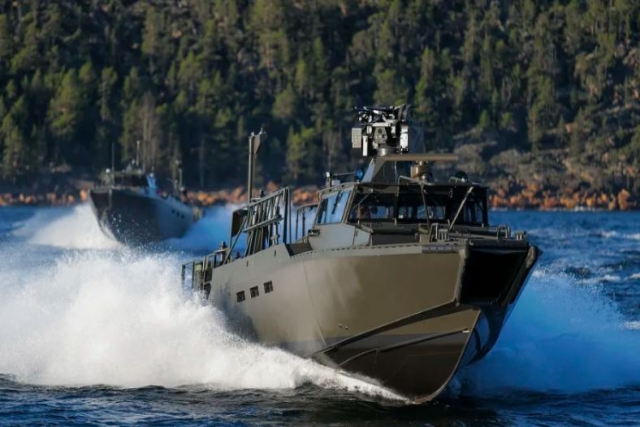Sweden Deploys New Anti-Submarine Spy Boats
To maximize their surveillance capabilities, the spy boats can collaborate with minesweepers and patrol boats.

The Swedish Armed Forces announced the deployment of anti-submarine spy boats, designed to stealthily conduct surveillance both below and above the water surface, on July 10.
The spanbåt is a relatively new addition to the Swedish navy, though the concept is not novel. Previously, there were four hydrophone buoy vessels of the Ejder class, which were decommissioned in the early 2000s. In 2015, a decision was made to rebuild and modify six patrol boats into patrol boats, leading to the creation of the Järv class, which are slightly larger than their predecessors.
The HMS Dristig, a patrol boat, operates with a crew of eight, including four officers and four sailors. Unlike other patrol boats, it has a cook on board, which first officer Ebba Serner notes is advantageous during prolonged missions.
The primary strength of these spy boats is their ability to remain hidden and use their sonar buoys to detect potential underwater threats in high-risk areas. The system is most effective in shallow waters, such as archipelagos and coastal regions.
According to Johan Bensköld, the ship commander of HMS Dristig, the sonar buoys are placed in strategic locations like narrow waterways and straits. The boats are equipped with weapons, including depth charges, for defensive measures if needed.
These vessels focus on submarine hunting, utilizing the passive sonar buoy system 911, and conducting optical reconnaissance on the surface, including nighttime operations. To maximize their surveillance capabilities, the spy boats often collaborate with minesweepers and patrol boats.
The system is cost-effective, allowing the navy to monitor a large geographical area with minimal resources.
Efforts are ongoing to make all patrol boats operational, enhancing weapon systems, sensors, methods, and routines. The boats are distributed among the mine clearance divisions in Karlskrona and Berga. Ship commander Johan highlights the cost-effectiveness of the skimmer boats and the sonar buoy system, noting their ability to maintain long-term, passive surveillance over large areas with minimal resources.
As the system expands and more patrol boats become manned, Sweden is regaining its ability to effectively scout both deep and shallow waters, contributing valuable capabilities to NATO.













